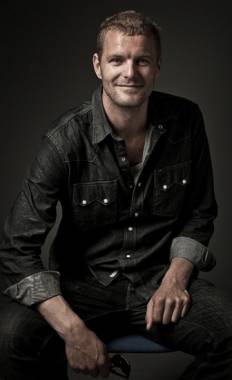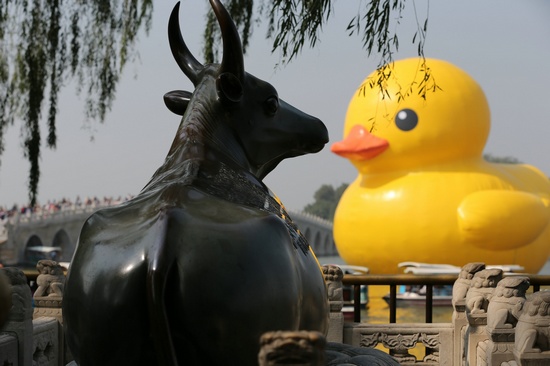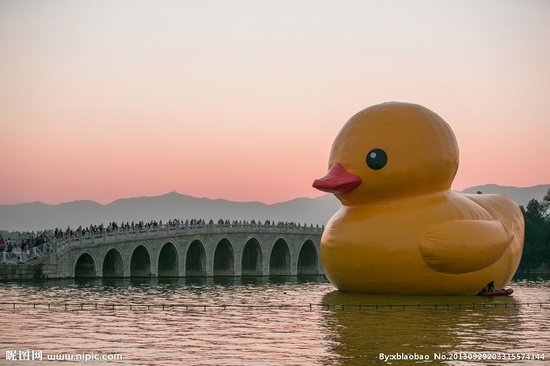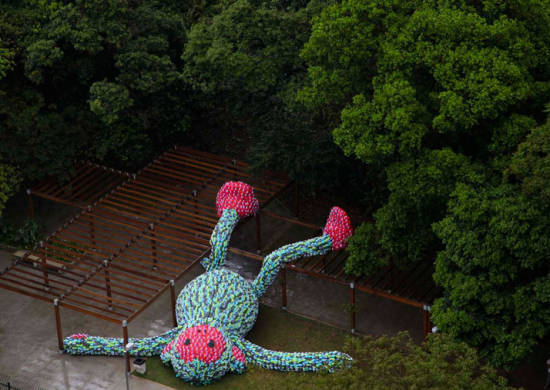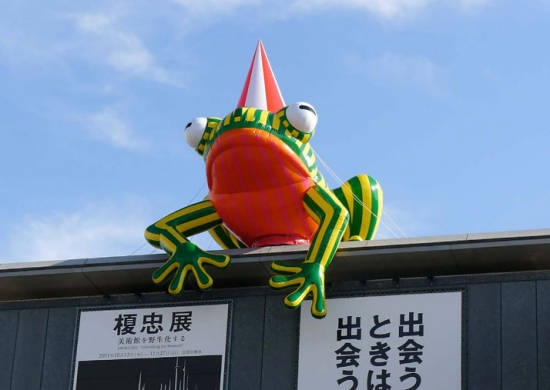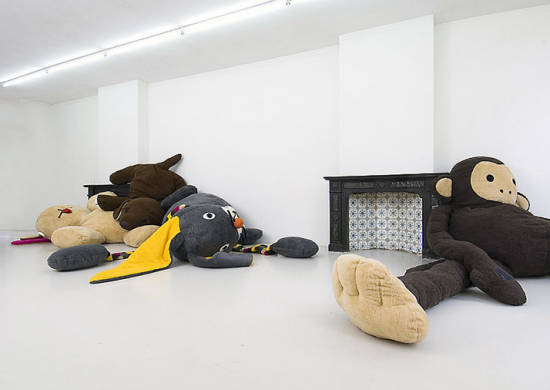large-scale work is my favorite
Florentijn Hofman ventured into big art pretty early, while he was still in college. Some friends and he started a company in order to paint murals over the summer and a businessman hired them to work on a nuclear power plant that had never been used. They painted a 15,000 m² Alpine mural on the side of this cooling tower. He thinked they were young and had nothing to lose and it felt really great. They had everything that they needed from the very start: paint, cranes, sky lifts, working in the open air, interacting with the audience, which are all vital to their work to this very day. The secret in these projects is to create a pleasant work floor and make sure that the commissioner takes care of the paperwork. Otherwise Florentijn Hofman would spend all day dealing with government officials and city councils!
using local materials for big installation art
Site-specific material is important in that local volunteers can identify with the sculpture. Florentijn Hofman hold that if you want to grasp people’s attention and adopt the work in their hearts, the best thing to do is get them to join in, so it’s nice to use a material that they can recognize. He also like to showcase familiar elements from a different perspective as was the case with using flip flops on 'Fat Monkey' in Brazil and locally produced shingles on 'The Big Yellow Rabbit' in Sweden.
People are very enthusiastic when they watch Florentijn Hofman’s works. They’re amazed by the sculptures and the effort that goes into them. The“Slow Slugs”made out of 40,000 plastic bags that move in the wind. It unveiled for 3 days in Angers, France. It’s about mortality, natural decay and the slow pollution of plastic in commercialized societies, so it’s only fitting 3 days. Most people think it’s crazy to work for two months on something that will only exist for three days, but it’s all part of the concept. Florentijn Hofman always tell his interns that inevitably the time and effort they place in projects is forgotten as it is the end-result that always remains with them.
So what would happen if no one was allowed to take pictures of your work? Is hard evidence a BIG deal in temporary art? Isn’t the memory of it enough?
Florentijn Hofman say that it is a really good question! Give me some time and maybe I will come up with a work that people are not allowed to take pictures of! I think it’s a great idea. I’ve been thinking about making a mole sculpture with a blacked-out interior that people would have to get down on their hands and knees to crawl into, without really knowing where they are going, but that’s as close as I’ve ever come to that concept! It would be interesting to make something so big and impressive that you’re not allowed to take pictures of. But then again museums do that all the time! At the end of the day I like the audience to circulate my work through the internet and social media, so if no one was around to see it, then I would probably take pictures myself!
For Florentijn Hofman it’s very important to control the life of the work right up until the end. For Florentijn Hofman thinks that it’s always feel a little sad, when we must demolish the works. But missing the artwork is part of the process. That’s how his work comes full circle.
